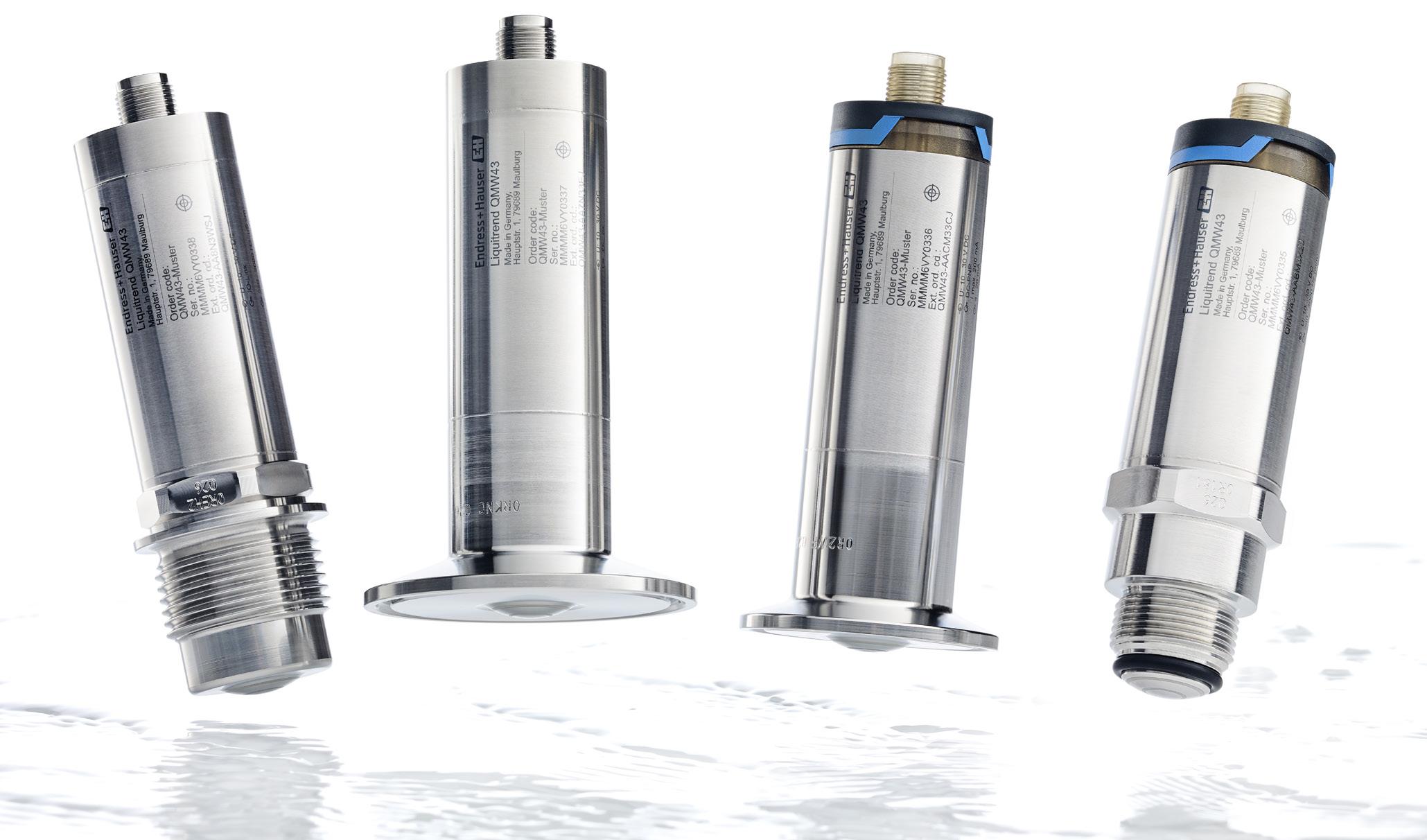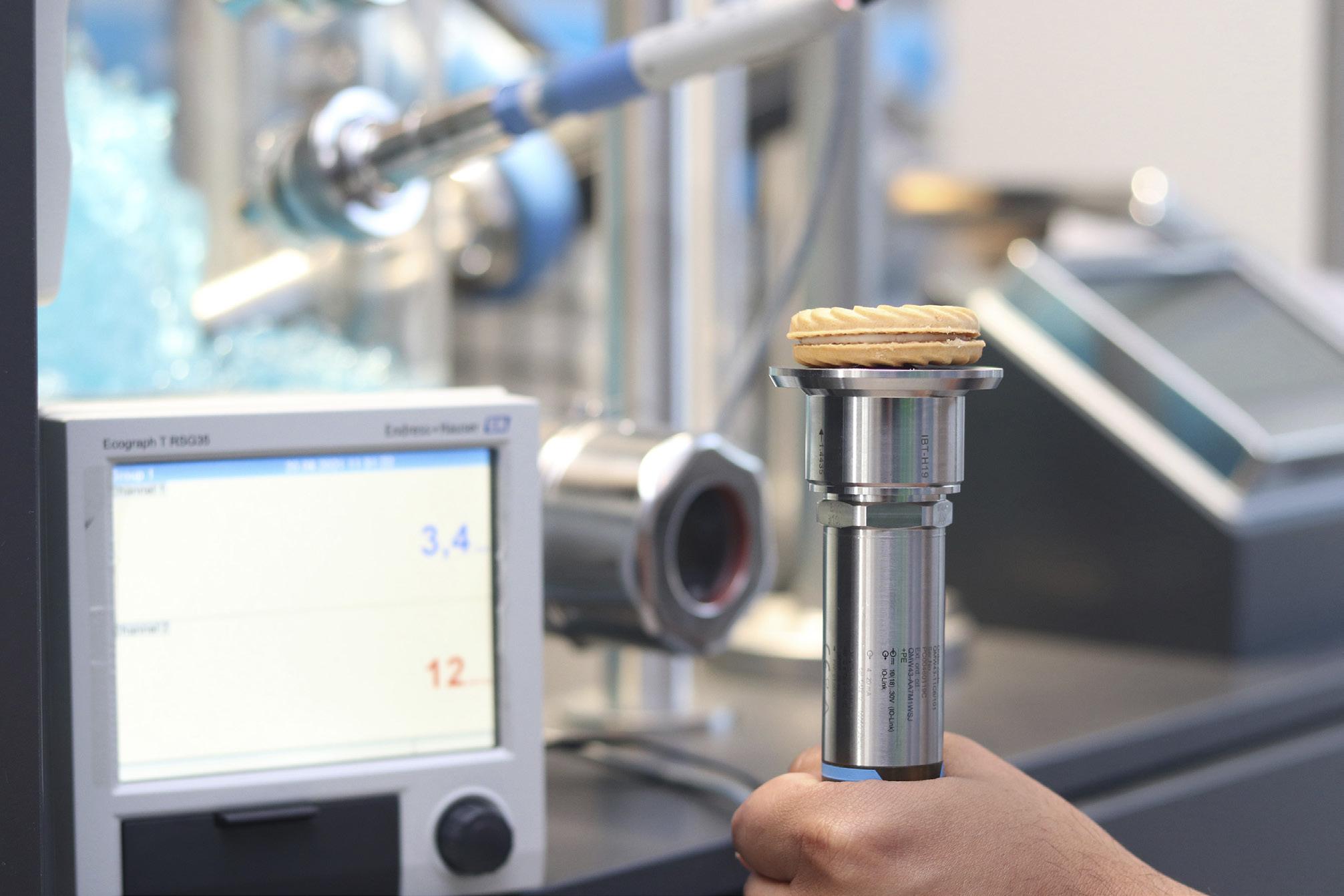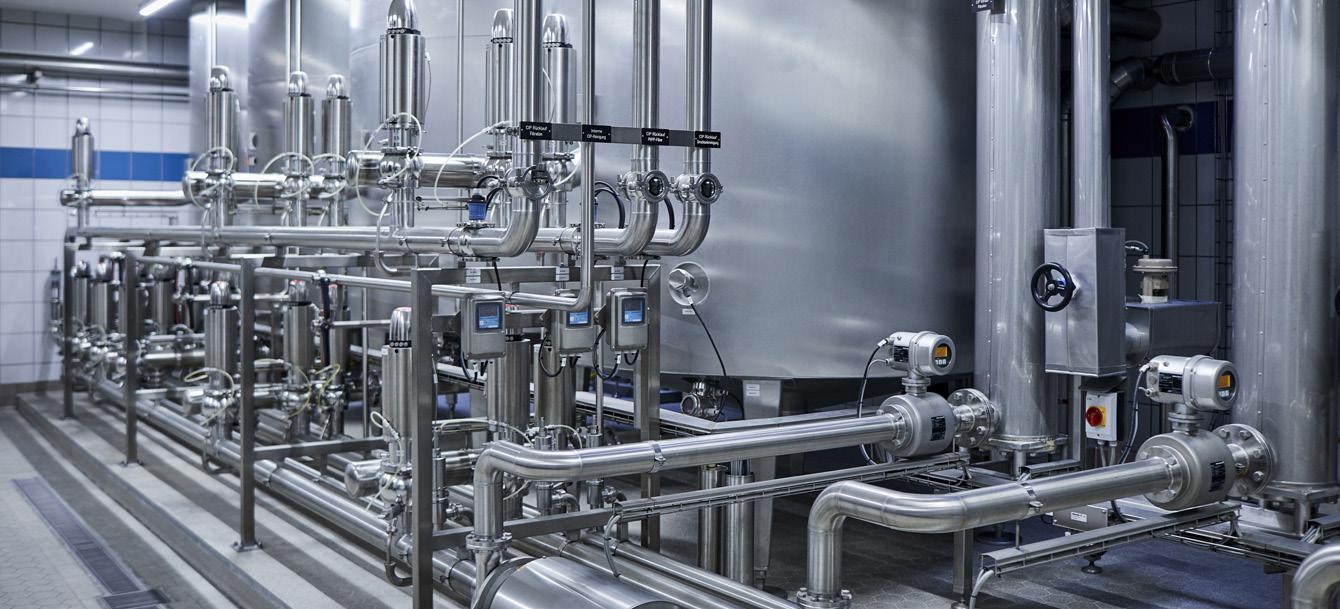
3 minute read
COMPANY FOCUS
How cleaning process impacts productivity of your plant
The automated process for cleaning pipes and tanks in the F&B industry, known as clean-in-place (CIP), is crucial to manufacture safe products. However, it can be time-consuming and an inexact process. To address this challenge, Endress+Hauser has developed a conductivity sensor that can monitor build-up to reduce the time spent on cleaning and ensure maximum safety in a highly regulated industry.
TO GUARANTEE THE production of high-quality products that are safe for consumption, a significant amount of time is spent on cleaning to ensure operations meet the hygienic standards defined.
To avoid the risk of contamination, many production processes in the food sector take place in closed systems, and this is where CIP is used. In many cases, the duration of the cleaning is determined by evaluating past data rather than looking at what is currently happening in the process, typically in most plants this is based on a set time interval.
MINIMISING CLEANING TIME
The Endress+Hauser Liquitrend QMW43 minimises the unproductive time of CIP without risking product safety or breaching regulations. The Liquitrend reliably and continuously measures the thickness of product build-up when it occurs in tanks and pipes.
The additional conductivity measurement also provides information about the cause of the build-up, i.e., whether it is caused by product residue or cleaning agents.
By connecting the device to the control system, the measurement data is available in real time and is automatically documented. If the sensor shows no more build-up, it can be concluded that the critical points have been successfully cleaned.
These insights into the process mean that cleaning time can be kept to a minimum and production increased without the concern for poor product quality.
WHO ARE ENDRESS+HAUSER
Endress+Hauser is a global leader in measurement instrumentation, solutions and services for industrial process engineering with offices in South Africa, where South Africa and sub-equatorial Africa, including Botswana, DRC, Kenya, Malawi, Mozambique, Namibia, Tanzania, Uganda, Zambia and Zimbabwe are supported and serviced. By choosing this company as a partner, customers opt for longterm reliability and a solution provider that has the ability to deliver both instruments and services for a complete solution.


The Liquitrend QMW43 can also help to reduce the time spent on laboratory analysis by continuously measuring the products’ conductive and capacitive electrical properties.
The use of conductive and capacitive measuring devices has long been adopted by Endress+Hauser. Using the combination of both signals continuously has proven to optimise processes like cleaning. Through these two measuring principals one can accurately determine the build-up height in both conductive and non-conductive processes. Quality parameters can be set in the control system to immediately identify products that don’t meet the required standards without the need for an additional lab test.
The Liquitrend can be used to measure liquids or pastes, whether the media is electrically conductive or not.
Due to the unique use of both conductive and capacitive measuring cycles, the device
automatically detects the most accurate measuring mode and uses it automatically. This means that the device can be used without any prior knowledge of the type or strength of the medium and no programming is needed to assist the device to detect any contamination. The Liquitrend meets all food safety regulations and has been constructed by European Hygienic Engineering & Design Group (EHEDG) design standards as well as FDA-compliant materials.
In conclusion, with the Liquitrend QMW43 you can reduce cleaning times while maintaining quality and productivity in your plant. •
Phone +27 (0)11 262 8077 | Mobile +27 (0)79 504 6798 Email dhiren.naidoo@endress.com
ENDRESS + HAUSER - www.endress.com






